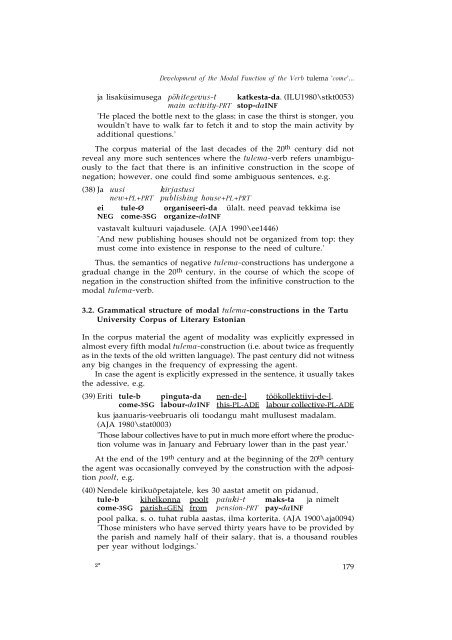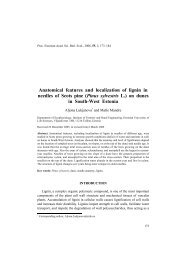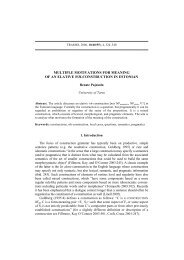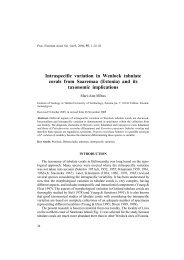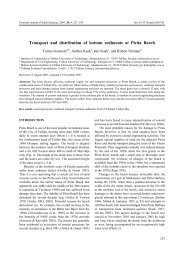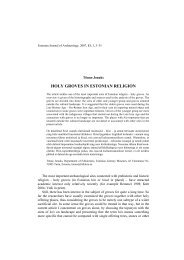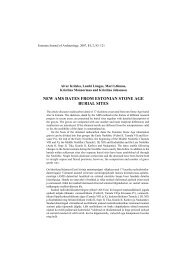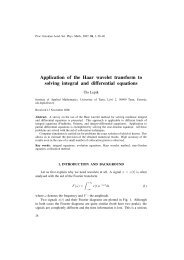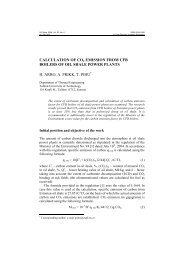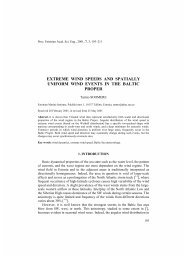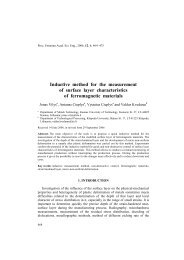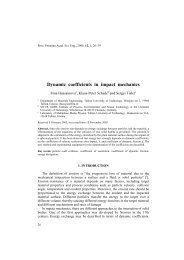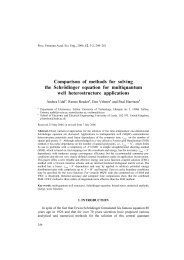PILLE PENJAM (Tartu) DEVELOPMENT OF THE MODAL ... - CEEOL
PILLE PENJAM (Tartu) DEVELOPMENT OF THE MODAL ... - CEEOL
PILLE PENJAM (Tartu) DEVELOPMENT OF THE MODAL ... - CEEOL
Create successful ePaper yourself
Turn your PDF publications into a flip-book with our unique Google optimized e-Paper software.
Development of the Modal Function of the Verb tulema ’come’...<br />
ja lisaküsimusega põhitegevus-t katkesta-da. (ILU1980\stkt0053)<br />
main activity-PRT stop-daINF<br />
’He placed the bottle next to the glass; in case the thirst is stonger, you<br />
wouldn’t have to walk far to fetch it and to stop the main activity by<br />
additional questions.’<br />
The corpus material of the last decades of the 20th century did not<br />
reveal any more such sentences where the tulema-verb refers unambiguously<br />
to the fact that there is an infinitive construction in the scope of<br />
negation; however, one could find some ambiguous sentences, e.g.<br />
(38) Ja uusi kirjastusi<br />
new+PL+PRT publishing house+PL+PRT<br />
ei tule-Ø organiseeri-da ülalt, need peavad tekkima ise<br />
NEG come-3SG organize-daINF<br />
vastavalt kultuuri vajadusele. (AJA 1990\ee1446)<br />
’And new publishing houses should not be organized from top; they<br />
must come into existence in response to the need of culture.’<br />
Thus, the semantics of negative tulema-constructions has undergone a<br />
gradual change in the 20 th century, in the course of which the scope of<br />
negation in the construction shifted from the infinitive construction to the<br />
modal tulema-verb.<br />
3.2. Grammatical structure of modal tulema-constructions in the <strong>Tartu</strong><br />
University Corpus of Literary Estonian<br />
In the corpus material the agent of modality was explicitly expressed in<br />
almost every fifth modal tulema-construction (i.e. about twice as frequently<br />
as in the texts of the old written language). The past century did not witness<br />
any big changes in the frequency of expressing the agent.<br />
In case the agent is explicitly expressed in the sentence, it usually takes<br />
the adessive, e.g.<br />
(39) Eriti tule-b pinguta-da nen-de-l töökollektiivi-de-l,<br />
come-3SG labour-daINF this-PL-ADE labour collective-PL-ADE<br />
kus jaanuaris-veebruaris oli toodangu maht mullusest madalam.<br />
(AJA 1980\stat0003)<br />
’Those labour collectives have to put in much more effort where the production<br />
volume was in January and February lower than in the past year.’<br />
At the end of the 19th century and at the beginning of the 20th century<br />
the agent was occasionally conveyed by the construction with the adposition<br />
poolt, e.g.<br />
(40) Nendele kirikuõpetajatele, kes 30 aastat ametit on pidanud,<br />
tule-b kihelkonna poolt paiuki-t maks-ta ja nimelt<br />
come-3SG parish+GEN from pension-PRT pay-daINF<br />
pool palka, s. o. tuhat rubla aastas, ilma korterita. (AJA 1900\aja0094)<br />
’Those ministers who have served thirty years have to be provided by<br />
the parish and namely half of their salary, that is, a thousand roubles<br />
per year without lodgings.’<br />
2*<br />
179


